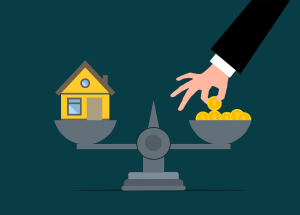A fixed rate home loan, as opposed to the Variable Rate Home Loan, is one where the rate is fixed for a defined time period. Not as popular the variable product, Fixed Rate loans still offer a range of features that make the loan type worthy of consideration, particularly if you’re looking for certainty in the first couple of years of your mortgage.
The most significant disadvantages of the fixed rate home loan products is that they usually limit the amount of extra repayments allowed and most don’t provide a redraw facility. So, with the certainty comes some limitations that don’t permit you to pay down your loan quickly, or allow you to access funds, over that fixed period.
Advantages of a Fixed Rate Home Loan
- Certainty of knowing what your repayment will be each month for a fixed number of years
- In a rising interest rate environment you will potentially be better of since unlike borrowers with a variable rate home loan, your repayment won’t change.
- Property investors can gain some certainty on their cash flow.
Disadvantages of a Fixed Rate Home Loan
Consider the following disadvantages of a fixed rate home loan:
- You will not benefit from falling Interest Rates when announced by the RBA, and passed onto borrowers by the banks.
- You are also usually fixed for a set term of a number of years. Once you’re locked into a fixed rate product it’s often difficult to break that arrangement. This presents problems if you would like to refinance or sell your home. Hefty break costs, often thousands of dollars, may apply if you pay off a fixed rate home loan prior to the fixed term ending. The break cost cannot be determined until the day you pay the fixed rate home loan off and the amount is dependent on the interest rates at that time and the amount of time remaining in the fixed period.
- Restrictions may apply when making additional payments, or a fee may be applied. Most lenders limit the amount of extra repayments to $5,000 to $10,000 per annum but there are some exceptions to this.
- Most fixed rate home loans don’t offer a 100% offset account, although there are some exceptions.
- If variable rates go down you won’t receive the benefit of this and may end up stuck in a higher fixed interest rate.
If you’re leaning towards a fixed rate product but you would like to take advantage of features made available via the Variable Rate home loan, you might want to consider a Split Rate Home Loan.
Sample Fixed Rate Products
The following is a small sample of available fixed rate products. Please contact us or refer to our product comparison pages to be paired with an appropriate collection of suitable home loan products.
Related Articles in our Blog
You may find useful information and articles in our blog. Feel free to call anytime on 1300661211 for any reason.













